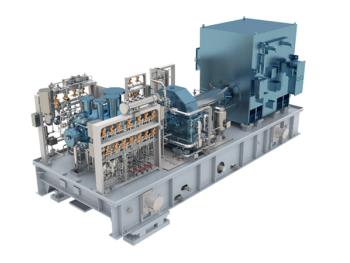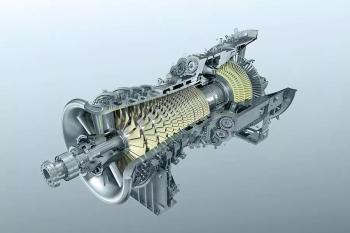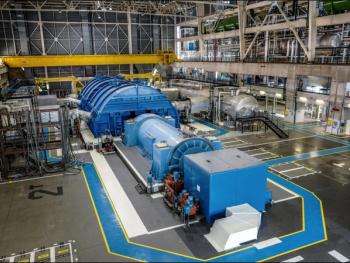
When should you Change your Turbine Oil
Most turbine oil users change their fluid based on its condition rather than interval-based oil changes, such as what we do when changing the motor oil in our vehicles. There is inconsistency however in understanding what conditions justify a lube oil change. Part of this inconsistency is due to lack of knowledge; part of it is because there are often not black and white answers. Replacing turbine oil is expensive and carries risk. Understanding what conditions determine the end of life of the fluid ensures that its life is optimized without exposing your equipment to damage by using the oil for too long.
When one thinks about the cost of an oil change, the first factor that comes to mind is the replacement cost of the oil in terms of currency per volume ($/gal; €/liter, etc.). The actual cost of replacing turbine oil is estimated to be between 2-5 times the cost of the oil itself. Other factors that add into the cost of replacing the oil is labor and handling, administrative work, loss of production, filter changes, new oil inspection, new oil filtration, system flushing and in some cases, disposal costs.
Any time the lube oil system interacts with people, there’s an inherent risk of contaminants getting into the system. Lube oil changes carry a lot of risk which many users are unaware of. These risks include putting the wrong type of oil into the system, introducing incompatible cleaners during flushing processes, dirt and moisture ingression and a wide range of other contaminants. It is always interesting to ask maintenance personnel what the craziest thing they’ve found inside a lube oil reservoir. The answers range from logical things like breathers, wrenches, gaskets, flashlights and sample bottles, to some unbelievable items such as bird feathers and small animals to pieces of clothing. It is clear that there is risk any time the lube oil system is opened.
So what are the oil analysis conditions that justify an oil change? Below are some common oil analysis results that may influence your decision.
· Low levels of antioxidants – the primary failure mode of turbine oil is oxidation and therefore monitoring its antioxidant health is of upmost importance. According to ASTM D4378 (“Standard Practice for In-Service Monitoring of Mineral Turbine Oils for Steam, Gas, and Combined Cycle Turbines”), the condemning limit of turbine oil is often considered to be 25% remaining antioxidants. In a mixed antioxidant system containing both amines and phenols, the condemning limit is when the amines are at 25% compared to new oil. Trending your antioxidants over time will determine its rate of depletion and help you decide the ideal time to take action before you reach the condemning limit. Replacing the oil or replenishing the antioxidant system are appropriate actions to consider when your antioxidants have depleted.
· Low oxidation stability – this is often determined by the RPVOT test (ASTM D2272). Although it is intuitive to believe that the oxidation stability of the fluid is related to the levels of antioxidants, there is not a direct correlation. The fluid’s oxidation stability is determined by several factors in addition to antioxidants, such as other additive components (rust inhibitors are an example), contaminants or degradation products. ASTM D4378 also suggests taking action when the oxidation stability of the fluid is 25% compared to new oil. The action step for managing low oxidation stability is the same as depleted antioxidants: consider an oil change or replenishing the antioxidant system.
· High levels of contaminants – contaminants may be measured by particle counting, water detection or determining the varnish potential of the fluid with tests such as Membrane Patch Colorimetry. In most cases, these contaminants can be removed and do not justify an oil change.
· Loss of Water Separability – Turbine oils are non-polar in nature and naturally separate from water. During its life however, contaminants or degradation products may introduce polar species into the oil lowering its water separability characteristics (also known as demulsibility). If your fluid has failing demulsibility, should you change it? Not necessarily. The most important consideration is what water removal technologies you have immediate access to in case of a sudden steam or water leak. Some water removal technologies such as vacuum dehydration or membrane separation will continue to work well even if the oil has failing demulsibility characteristics. Other technologies such as coalescers or centrifuges may be impaired when the oil no longer readily separates from water. The most important action to take when your oil has failing demulsibility is to ensure that your turbine system will be suitably protected with appropriate water removal technology.
· Incompatibility – Occasionally, an incompatible fluid may get into your turbine oil system. This may cause the oil to foam, generate deposits or create a two-phase fluid. These are dangerous conditions and typically justify an immediate oil change. Before adding any new oil to your system, ensure that D7155 (Standard Practice for Evaluating Compatibility of Mixtures of Turbine Lubricating Oils) is performed.
There are multiple other oil analysis tests that could determine the end of the life of the oil such as changes in viscosity, increases in acid number, failing corrosion protection and poor air release times, however this are less common failures to see in the field.
Determining the optimum time to take action on your turbine oil can be a complex decision. If you are unsure about your oil analysis results and what action should be taken, consult with the experts. Taking action on your oil at the right time and not too early or too late, results in lower O&M costs and improved system reliability.
Newsletter
Power your knowledge with the latest in turbine technology, engineering advances, and energy solutions—subscribe to Turbomachinery International today.




